Curriculum Blog
Five ways to support History
Introducing another in the 5 ways series of resources to help you access LGfL content quickly and help your students learn more.
The aim of 5 ways is to showcase five ways to use LGfL resources across the curriculum that you can take and use and share for example, they can be shared in the staff room, at INSET sessions and also given to parents so that they can support their children’s learning at home.

Mixed Reality
LGfL have a wide range of both Augmented and Virtual Reality to bring your History teaching to life and enable children to go back in time.
Topics covered include the following:
This resource on 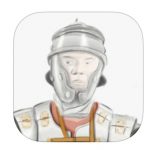 Roman London is divided into 6 thematic 'lessons', each one having a mix of filmed explanations of surviving remains and of objects, both real and replica. This offers a large amount of resource material to enable teachers to tell the story of Londinium without leaving the classroom and for students to access information to enable further research when learning from home. The resource also features Augmented reality images, that creates a series of artefacts and experiences that complement this learning resource by bringing it to life in a way that is otherwise unimaginable. You can download the app for iOS and android. All trigger images can be downloaded from within the resource.
Roman London is divided into 6 thematic 'lessons', each one having a mix of filmed explanations of surviving remains and of objects, both real and replica. This offers a large amount of resource material to enable teachers to tell the story of Londinium without leaving the classroom and for students to access information to enable further research when learning from home. The resource also features Augmented reality images, that creates a series of artefacts and experiences that complement this learning resource by bringing it to life in a way that is otherwise unimaginable. You can download the app for iOS and android. All trigger images can be downloaded from within the resource.
The resource also contains Virtual Reality placing the students on Hadrian's wall on a snowy winters night, thousands of years ago, allowing the students to capture a snapshot of the life of a Roman soldier, you can download the app for iOS and android.
The LGfL Cold War resource spans borders, ideologies and even realities; interviewing spies, journalists and dissidents: visiting prisons, concentration camps and museums; filming underground, above ground and from the air; and uncovering documents, images and secrets never before revealed. The Cold War is divided into thematic and curriculum sections, but all documents, images and videos are searchable via the resource bank, allowing teachers to fully disaggregate this wealth of primary and secondary-source material. To bring the era to life, 22 state-of-the-art augmented reality artefacts can be viewed the mobile iOS or android app. All images can be downloaded from within the resource.
The resource is further supported with the Nuclear Strike Virtual reality experience, for both iOS and android, you can view a walk though of the resource below:
Updated in May 2018 with an improved user interface and enhanced content, Key Stage 2 History learners can experience the ancient Egyptian civilisation in 'mixed reality' (augmented and virtual reality) and with expert video explanations from a real life Egyptologist from the Manchester Museum.
As always, the augmented reality objects available via iOS and android, are embedded in the worksheets (these can be downloaded from within the resource), while the Virtual reality for iOS and android recreates the experience of discovering an ancient Egyptian temple, half buried in the desert. What will you discover when you go inside?
The resource also now features a detailed case study showing how one experienced teacher combined the AR, VR and video content to achieve better literacy outcomes for all learners.
Maya,
A journey through the Maya world includes 10 cross-curricular activities, as well as a teacher guide and the Active Worksheets - these sheets not only contain historical information but also include the Augmented reality triggers available for iOS and android.
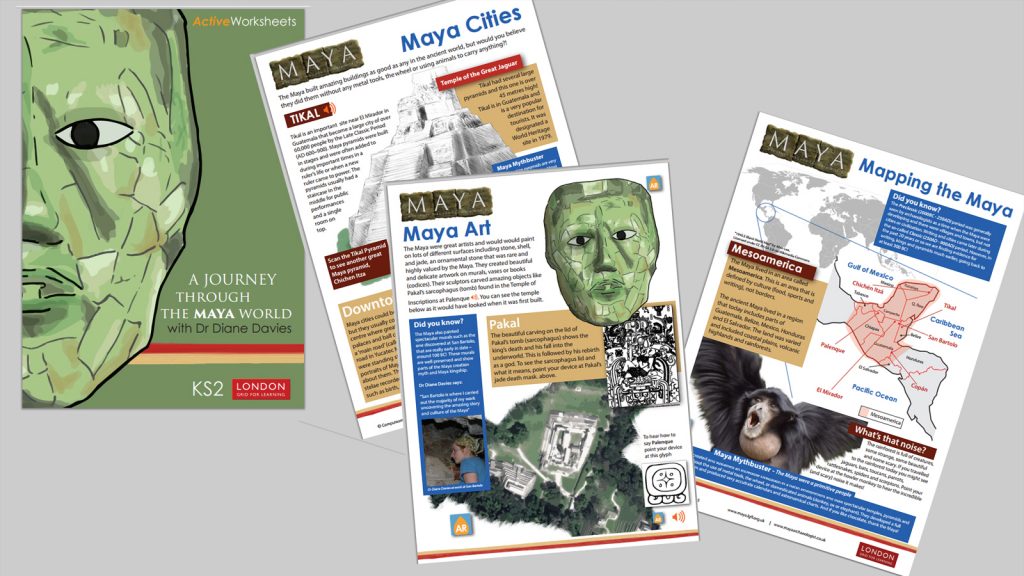
This innovative new virtual-reality app brings life in the trenches to life and is ideal for teachers covering World War 1 and trench life and warfare in general. Available for iOS and Android, the resource also come with a stimulus writing activity.

The Active Worksheet pack was produced in response to the centenary of the outbreak of World War 1. The resource pack uses augmented reality to produce a genuine 'wow' moment in the classroom and bring virtual artefacts to the desktop. This is backed up by mapped curriculum activities, the app is available on iOS and android devices.
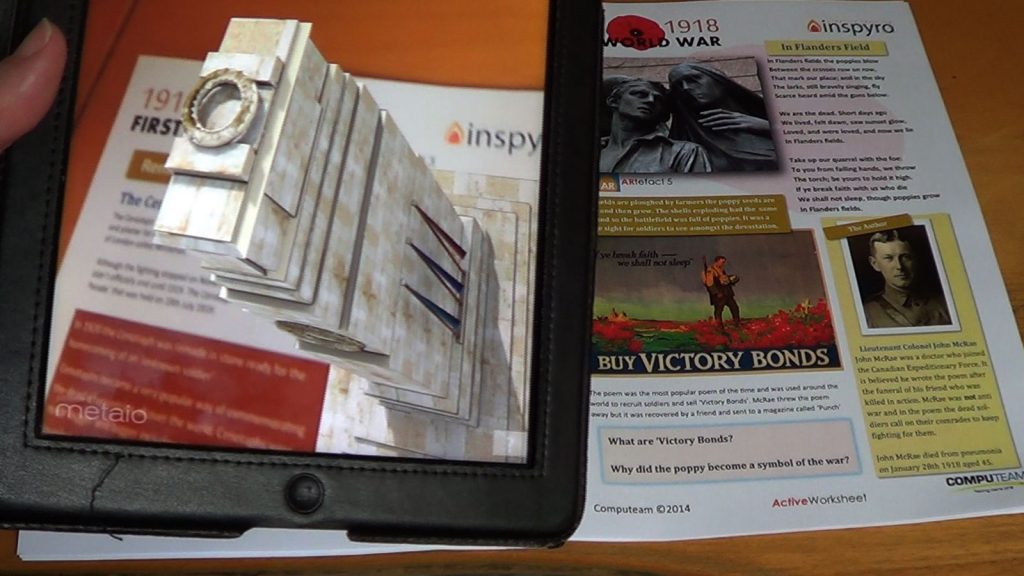
The tale of Sigurd and the Dragon is told using immersive virtual reality, through the iOS and android app you embark on an impossible and unforgettable field trip to an authentic Viking Longhouse the hear the classic Norse tale of how Sigurd killed the greedy dragon Fafnir. The story is carved on a Christian cross in a churchyard in Halton, Lancashire and pupils will also visit the cross, viewing it as it remains today.
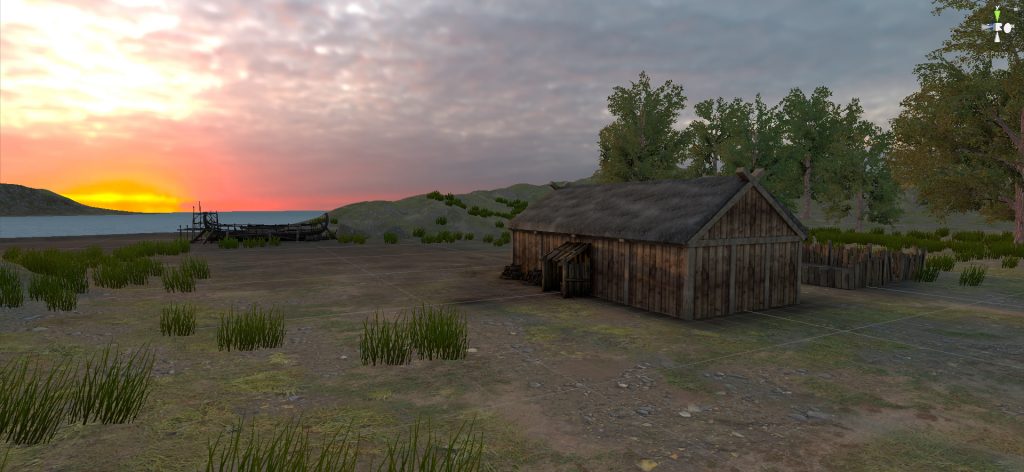
This is backed up by five interactive worksheets that display augmented reality artefacts, via iOS and android app, exploring themes in Viking history from 'Raiders and Traders' to 'Pagans'. The experience culminates in an activity covering green screen video and animation techniques, enabling the pupils to either re tell the story or use the images and sounds to tell their own tales of Norse Mythology.
Using augmented reality, Prehistoric Britain: ActiveWorksheets bring this abstract period of history to life. Available on both iOS and android, the Augmented reality enables pupil to view 3D models, listen to mini podcasts and watch videos or animations. The resource not only provides key information on how prehistoric people lived and developed, but also can provoke discussion of evidence and act as a primer for historical thinking and analysis.
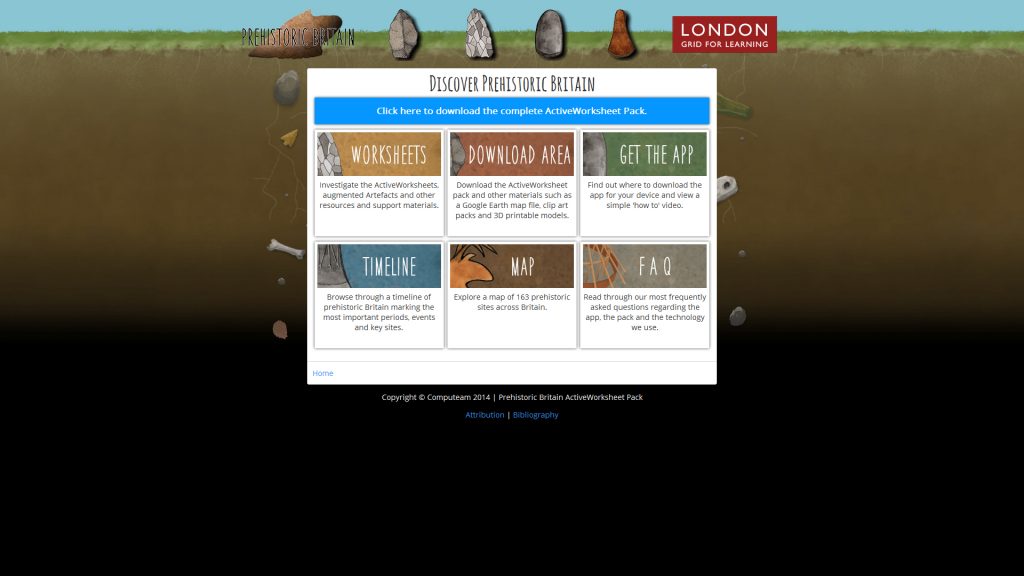
The Tudors in London resource aims to develop an understanding of a historical context in which to appreciate how events of 500 years ago still impact London life today. Featuring over 140 high quality video clips and 60 high resolution images from the Museum of London Archaeological Archive, Royal Collection Trust and key Tudor locations in London, the extensive digital collection is further enhanced by a framework of curriculum-linked material. Lesson plans suggest classroom-based activities to help teachers make the most of the wide range of resources within the historical archive.
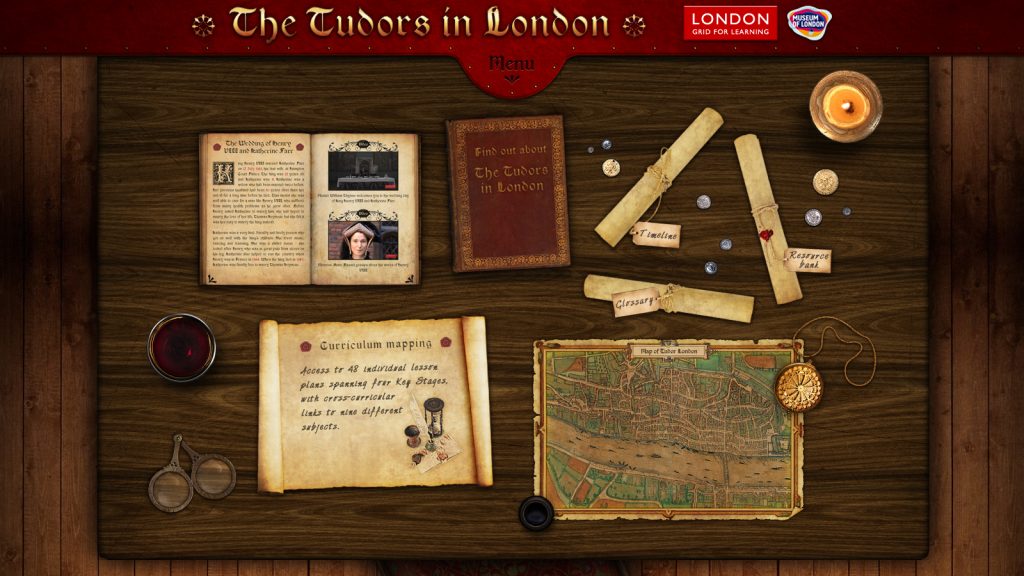
The structure of support material is specifically designed to meet the needs of History teachers working with Key Stage 2 pupils, detailed lesson plans are provided, offering a complete support package to maximise the benefit of this digital collection. You can watch a trailer for the resource here.
Widgit Symbols are simply drawn, colourful symbols designed to illustrate a single concept in a clear and concise way. They cover a range of topics wide enough to make them suitable for symbol users of all ages and abilities. The use of these symbols increases the accessibility of written text by giving readers of all literacy levels greater access to information. As they are designed specifically for written information, Widgit Symbol users can develop a real independence in reading and writing. There are 21 activity books and worksheets available to support the history curriculum, covering among others Ancient Greeks, The Victorians and Anglo Saxons.

Busy Things has a wide range of resources and games for use in Early years, KS1 and KS2 there are over 70 activities that are linked to the history curriculum. These include a range of labelling activities as well as writing frames and time line activities. You can search both via subject and topic using the curriculum browser.

Viking adventures at the British Museum
'Viking Adventures at the British Museum' started life as an educational film screened in cinemas around the UK with professional recreations of Viking life, raids and death. This resource not only includes original footage from the film, but also new, exclusive LGfL filming of curators handling Viking artefacts in the British Museum vaults, plus high-resolution images, new explanatory texts and a series of cross-curricular lesson plans for KS2 teachers. Although the focus of the resource is History, it also has lesson links to English, Geography, DT and Computing. You can watch the trailer below
Over the next couple of months, we will be adding to the series, but would love to hear your thoughts! What 5 ways would help you get the most out of LGfL resources?
Please let us know via our Twitter or Facebook pages or in the comments section of this blog using the hashtag #5ways
